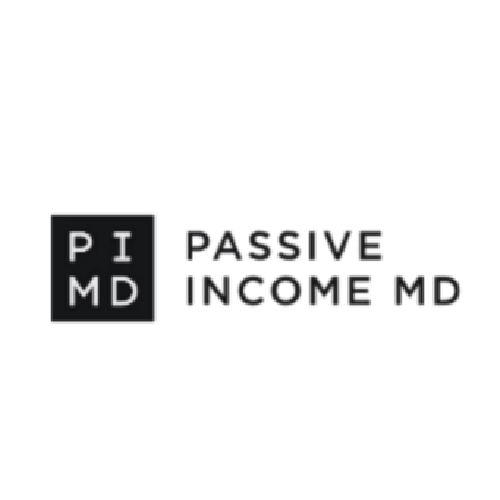Investors often miss the significant potential of incorporating new approaches when creating their initial investment strategy to meet their financial goals. As investors build a portfolio, they should prioritize diversification and long-term success. In multifamily real estate, the 1031 exchange stands out as a powerful tactic that can maximize returns and build long-term generational wealth. In short, a 1031 exchange allows real estate investors to defer paying capital gains taxes on an investment property when they sell it, but they must follow many rules and timing standards to use this strategy. This article explores the key advantages of 1031 investing and how it can elevate your real estate portfolio.
1031 Exchange in Multifamily Real Estate
What is a 1031 Exchange?
A 1031 exchange, named after Section 1031 of the Internal Revenue Code, is a tax-deferral strategy that enables investors to defer capital gains taxes by reinvesting the proceeds from the sale of an investment property into another like-kind property.
Purpose:
- The primary goal is to defer taxes, allowing investors to leverage their entire sale proceeds for new investments, rather than having a portion deducted for taxes. This tax deferral is often referred to as “kicking the can down the road”.
Like-Kind Property
A “like-kind property” refers to two real estate assets that are similar regardless of their grade or quality.
The History of the 1031 Exchange
The Internal Revenue Code formalized Section 1031 in 1954. This legislation refined and expanded the rules for property exchanges, introducing more specific criteria for deferring taxes on like-kind exchanges. In 1984, significant changes were made to Section 1031, including the exclusion of personal property from like-kind exchanges. Over the next 30 years, a few updates were made to ensure compliance and address evolving market conditions and investment practices.
Tax Cuts and Jobs Act of 2017:
The Tax Cuts and Jobs Act of 2017 kept Section 1031 for real estate exchanges but limited it to only real estate. It removed personal property from being eligible for 1031 exchanges, focusing the benefits solely on real estate transactions. Over the decades, the 1031 exchange has become a vital tool for real estate investors, allowing them to defer taxes, reinvest proceeds, and build wealth through strategic property exchanges.
Key Advantages of 1031 Investing
-
Tax Deferral
-
-
- When investors utilize the 1031 exchange strategy, they can defer capital gains taxes, a major advantage. This tax deferral occurs when they reinvest the proceeds from a property sale into a like-kind property of equal or greater value.
- By reinvesting through a 1031 exchange, investors absorb those capital gains into the new investment and are no longer obligated to pay them at the time of the original sale. Failing to reinvest within the 180-day window would have required investors to pay those taxes upfront instead.
-
-
Increased Buying Power
-
-
- By reinvesting the full sale amount, investors can defer paying taxes, allowing them to preserve their capital and reinvest it fully into the new property, maximizing their investment potential.
- Using a 1031 exchange, it’s more lucrative and strategic to invest in larger assets, as this approach maximizes the potential benefits and yields the most attractive outcomes.
-
-
-
- Another exciting benefit of 1031 exchanges is the diversification it offers. Investors can explore alternative asset classes and different geographic locations, allowing them to diversify their property types and build a more varied portfolio. This strategy not only reduces risk but also increases potential income streams.
- By diversifying into various asset classes and markets, investors can tap into multiple revenue sources, potentially leading to higher and more stable cash flow. This approach can also provide a hedge against market fluctuations, as different property types and regions may perform differently under varying economic conditions, further enhancing the overall resilience and profitability of the portfolio.
-
-
Wealth Accumulation
-
- One of the most lucrative benefits of a 1031 exchange is the ability to compound wealth. By deferring taxes and reinvesting in new properties, you can use the additional income to fuel your next investment. With each reinvestment, you increase your capital, leading to exponentially higher returns and cash flow—creating a domino effect of growth. Each investment builds on the last, all while minimizing tax liability and maximizing your wealth-building potential.
- One of the long-term benefits of 1031 exchanges is the powerful impact on legacy planning. As you continually roll each investment into the next, your wealth continues to grow. Upon your passing, your family can inherit these investments without the burden of paying taxes on the deferred gains, paving the way for generational wealth creation and financial security for your heirs.
Strategic Considerations for 1031 Exchanges
-
Timing and Planning
-
-
- Adhering to the timeline provisions in Section 1031 is crucial when using this strategy. You must start the exchange within 45 days of selling your asset, or you will disallow the entire exchange.
- Many people fail to understand the timing standards, a common pitfall to avoid. The 45-day identification period and the 180-day exchange period are non-negotiable. If you do not complete the 1031 exchange within these explicit periods, you will be liable for the taxes incurred from the sale of your original asset.
-
-
Tips for Selecting a Replacement Property
-
- Make a list of several suitable properties within the 45-day time frame to increase your chances of finding the right one.
- Work with experienced professionals such as real estate agents, tax advisors, and attorneys specializing in 1031 exchanges. Their expertise can help you navigate the complexities of the exchange process, identify suitable replacement properties, and ensure compliance with all IRS regulations.
- Choose properties that have the potential for future growth and appreciation. Look for locations with planned infrastructure developments, improvements, or revitalization projects. Properties in up-and-coming areas can offer significant long-term value.
- Investigate the real estate markets where you are considering purchasing replacement properties. Look for areas with strong economic growth, population increases, and job opportunities, as these factors often indicate a healthy real estate market with potential for appreciation.
Key Takeaways:
A 1031 exchange investment strategy, while complex, offers significant advantages to investors. These include tax deferral, long-term wealth creation, portfolio diversification, risk mitigation, and increased buying power. Despite the challenges involved, the benefits can far outweigh the difficulties. By planning accordingly and consulting experienced professionals, you can leverage the 1031 exchange to build a lasting financial legacy.
Ready to explore 1031 investment opportunities for multifamily?
Check out Viking Capital’s newest investment opportunity: Peoria Gateway. A luxurious 200-unit apartment community set to debut in 2026.




















